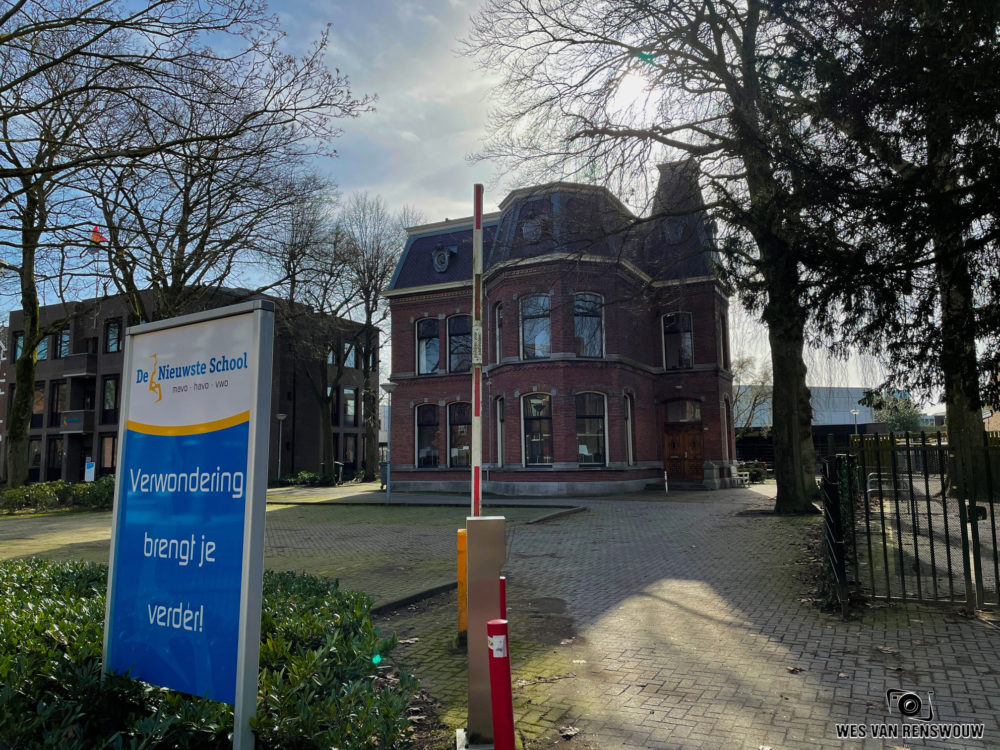The Newest School: The plus document in practice

When you think of secondary education, you quickly think of grades, subjects and classroom teachers. The Nieuwste School in Tilburg paints a different picture. There, students own their learning and the starting point is “wonder. Bas Leijen is Undergraduate Education Manager at this school, in which he has been involved almost from its inception in 2005. In a conversation, he talks about how education at his school continues to develop and that the starting point in this must always be the vision, or the why – in the process, this became increasingly clear. The plus document in Simulise’s digital portfolio is used as a tool at his school.
The three tenets of the Newest School are wonder, ownership and making what is learned visible. When the school looked for a digital system to support these starting points, they ended up with Simulise. Bas Leijen: “Our first order of business is that a student leaves our school with a diploma in his pocket. But you can’t tell from a diploma where a student’s strengths lie or what his personal growth looks like. We do make that visible. We do this in a personal portrait in Simulise. The diploma is not just a list of marks, but shows the development of the student over the years.
Throughout the learning process, students build their own portfolio. The student owns that. Leijen: “In fact, putting together a portfolio is a form of documented reflection. Students reflect on what they did, how they tackled something and what they already know and can do. Of course, you can’t reflect overnight. That is why students at the Newest School learn what reflection is and what we expect of them in the process.’
Personal portrait
The personal portrait is part of the portfolio at the Newest School. A line has been developed for its completion that students complete at different times of the year. It has become a kind of report card, which is also part of the final diploma. “The personal portrait includes the competency diagram, a reflection from the student, a particular assignment, as well as a piece from the mentor,” Leijen says. ‘The mentee should invite the mentor to post a piece in Simulise. In this piece, he or she reflects how the mentee has developed.’
The competency diagram is often the trigger for a conversation, Leijen says. For example, students talk to a mentor or expert (as a subject teacher is called at this school) about differences in scores they gave themselves for competencies and the scores the expert gave them. These differences are visible in the competency diagram. The personal portrait can also be enlightening in conversations with parents. ‘We often hear back that parents recognize their child in it. I find that very valuable.’
Pass the time
In mentoring at this Tilburg school, students are guided in the development of five competencies: researching, reflecting, presenting and justifying oneself, dealing with others with respect and tolerance, and being trustworthy.
Students conduct research in various learning areas and identify with each other what they have learned from their own research, as well as what they have learned from the presentations of others. They make this reflection visible in Simulise. At first, this all seemed to work smoothly, yet resistance arose here and there from experts and students. “We don’t work with teaching methods at this school,” Leijen says. ‘Experts create their own teaching materials and students choose a topic they want to research within the theme. Unintentionally, the image arose that you have to be able to put everything in Simulise, while the platform is not meant to be like that at all. Before we realized it, the digital platform became leading, while your educational vision, the Why should be leading. We therefore started to ask ourselves again what the role of competencies is within our education. We have since set up a line for that. And now we are going to see how we are going to give shape to that in Simulise.’
“In hindsight, we started too soon and thought the solution was in the platform,” Leijen continued. ‘But an instrument can only be a tool. That might be a good tip for other schools: act from your vision, and don’t use the chosen tool to bring about innovation.’
Want to know more?
https://www.denieuwsteschool.nl

